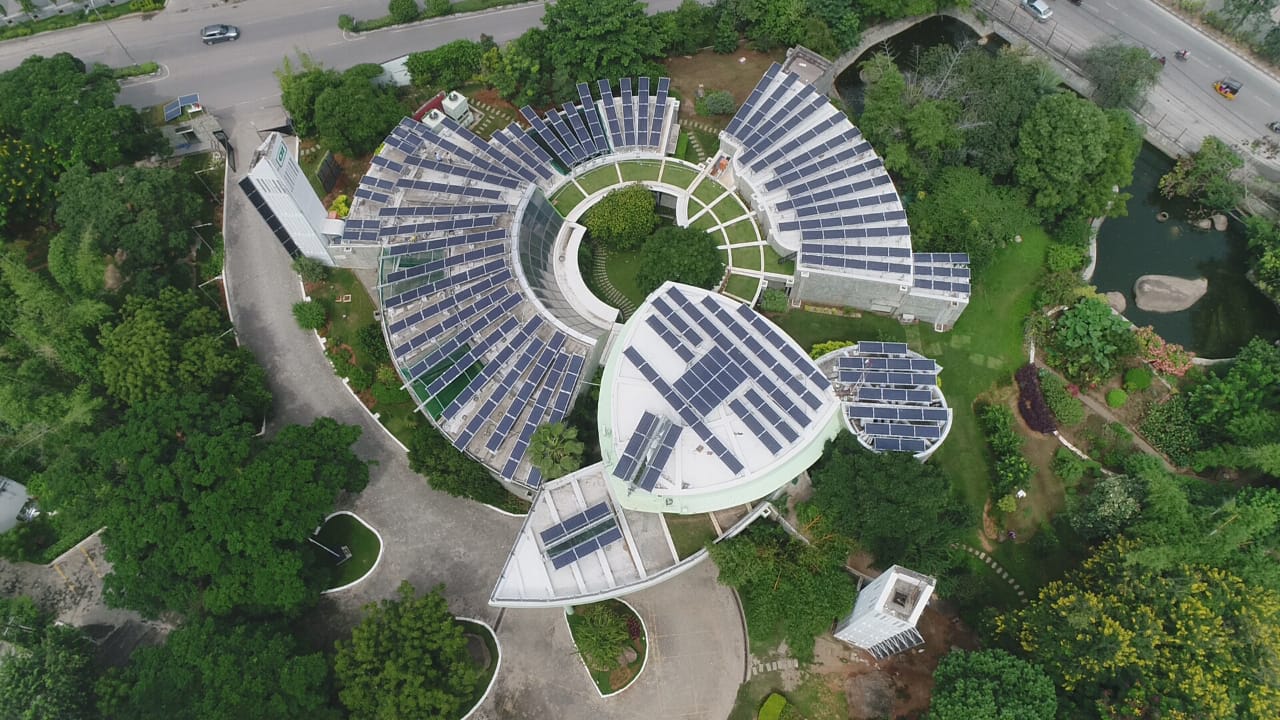In 2018, World Green Building Council (WGBC) initiated the ‘Advancing Net-Zero’ project which defines an ambitious target of achieving net-zero emissions by the year 2030 for all new buildings. To support this initiative, the Indian Green Building Council (IGBC) has developed the ‘Net-Zero Energy Rating’ in association with USAID and WGBC. This rating system intends to cement the centre’s commitment towards energy efficiency and drive the NZE building movement in India Further, it seeks to complement the National Mission for Enhanced Energy Efficiency and the National Solar Mission. It is applicable to a wide range of typologies such as commercial, offices, schools, residential etc.
In this webinar, Dr. Shivaraj Dhaka (Counsellor at IGBC) discusses the IGBC Net Zero Energy Rating system in detail, including the program requirements, compliance approach and process of achieving the certification. The webinar also looks at the newly retrofitted IGBC building and the strategies implemented.
Dr. Dhaka starts by walking us through the requirements of the NZE rating system. It recognises the pertinence of passive measures to reduce the annual energy use of buildings to the lowest extent possible before designing RE systems to offset the demand. Further, the code provides a provision to tap on-site and/or off-site Renewable Energy (RE). The rating system consists of mandatory and voluntary requirements. This is a 100 point rating system where 75 points are alloted to energy performance and 25 points are allotted to renewable energy generation. To achieve platinum certification, projects would need to secure a minimum of 80 points. Let us understand the requirements of the NZE rating system in detail:
Energy Performance
The rating system defines two mandatory requirements i.e. energy performance and thermal comfort. Buildings which are certified under IGBC or have an energy performance index ratio (EPI ratio) of less than 1 comply with the mandatory credit. To meet the voluntary credits, buildings can opt for the simulation approach or the prescriptive method. The latter awards points under the following categories: energy efficient envelope, air-conditioning, lighting and equipment.
Renewable Energy (RE)
In the case of renewable energy credits, it is mandatory for on-site RE sources to offset 5% of the total building energy consumption. The remaining RE can be catered through an off-site source. Points are allotted based on the percentage of energy consumption met through onsite sources.
Projects certified under the rating system include CII-IGBC centre in Hyderabad; Plant 13 Godrej and Boyce in Mumbai; Globicon terminals in Mumbai; and Capgemini campus in Bangalore.
Case Study : The CII_Sohrabji Godrej Green Business Centre
ompleted in the year 2002, the IGBC centre is the first LEED Platinum rated building in India. With a built up area of 1800 sq.m, the center exemplifies sustainable performance through the thoughtful integration of passive and active measures.
IGBC has walked the talk and demonstrated the viability of retrofitting their existing facility to meet the net-zero goal. It now features a 150 kWp bi-facial photovoltaics, effective lighting technologies and a highly efficient water cooled chiller system.
To achieve higher energy efficiency standards, the center has installed two 50TR water cooled chillers with a part load efficiency of 6.58 and 100 LED fixtures with an efficacy of 132 have replaced the old lighting system. To meet the total energy consumption, on-site bi-facial panels have been installed which capture energy from both the faces of the panel, thus increasing the total energy generation.
The webinar ends with Dr.Dhaka delineating the way forward for IGBC to promote the uptake of NZEBs by closely working with prominent organisations such as WGBC, USAID and Shakti Sustainable Energy Foundation.
This webinar was conducted on 4th July 2019.


